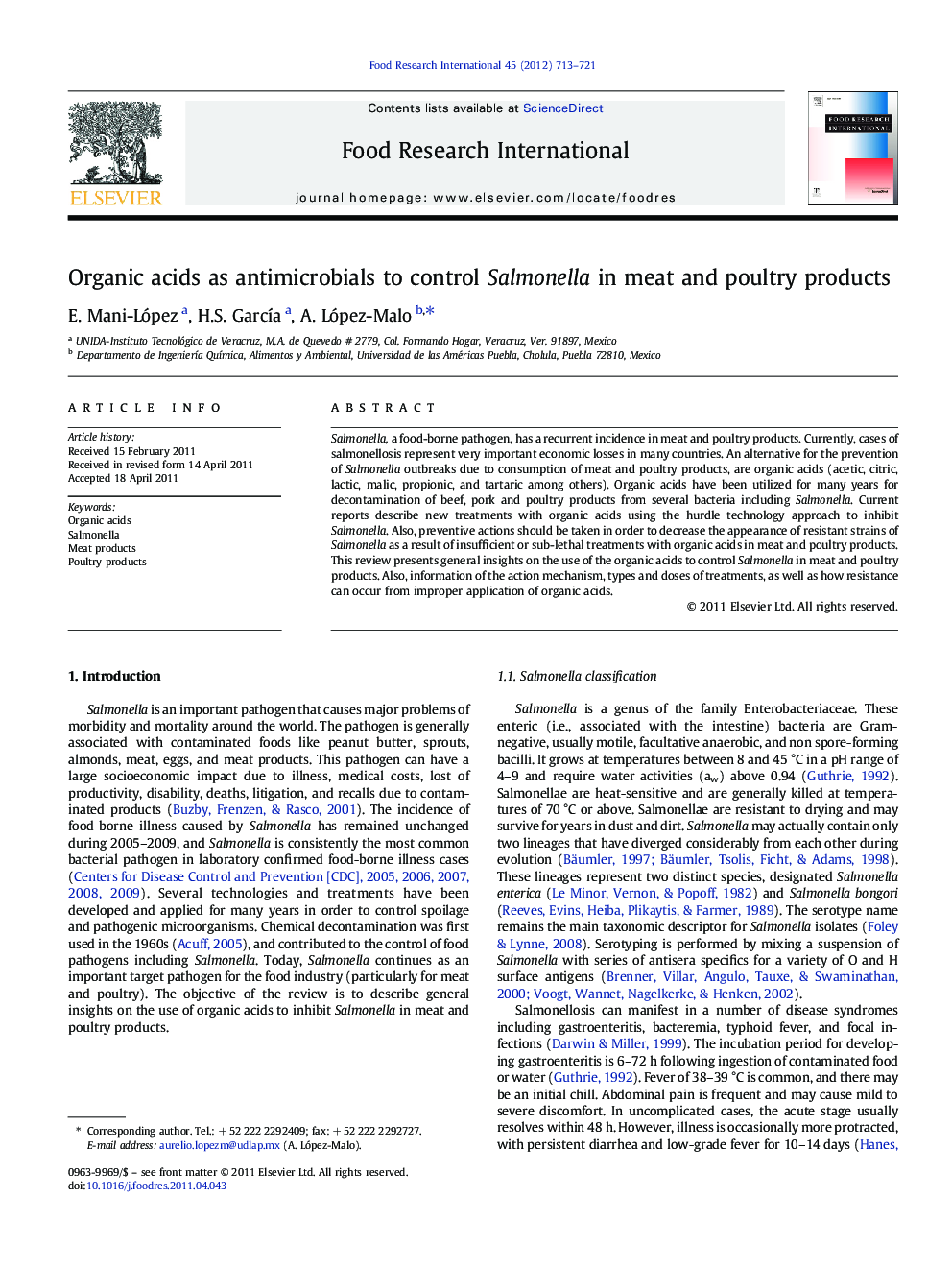| Article ID | Journal | Published Year | Pages | File Type |
|---|---|---|---|---|
| 4561720 | Food Research International | 2012 | 9 Pages |
Salmonella, a food-borne pathogen, has a recurrent incidence in meat and poultry products. Currently, cases of salmonellosis represent very important economic losses in many countries. An alternative for the prevention of Salmonella outbreaks due to consumption of meat and poultry products, are organic acids (acetic, citric, lactic, malic, propionic, and tartaric among others). Organic acids have been utilized for many years for decontamination of beef, pork and poultry products from several bacteria including Salmonella. Current reports describe new treatments with organic acids using the hurdle technology approach to inhibit Salmonella. Also, preventive actions should be taken in order to decrease the appearance of resistant strains of Salmonella as a result of insufficient or sub-lethal treatments with organic acids in meat and poultry products. This review presents general insights on the use of the organic acids to control Salmonella in meat and poultry products. Also, information of the action mechanism, types and doses of treatments, as well as how resistance can occur from improper application of organic acids.
► Action mechanism of organic acids. ► Salmonella control in meat and poultry products. ► Resistance to organic acids. ► Acetic, citric, lactic, propionic, tartaric and malic acids. ► Salmonella recurrence in meat products.
